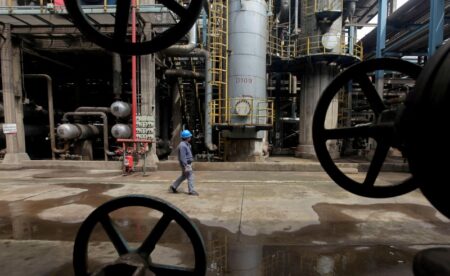prices have been under pressure recently, trading within a narrow range and slightly lower due to limited trading volume and liquidity.
However, as per analysts at Citi Research in a note dated Monday, this weakness in uranium prices is expected to subside as demand for nuclear energy continues to rise, while supply struggles to keep pace.
Analysts at Citi remain tactically bullish on uranium in the near to mid-term, with projections indicating a potential price rebound to $98/lb later this year.
Citi has adjusted its uranium price forecasts in response to the recent market softness. The analysts now expect uranium prices to average $94/lb in 2024, with potential upside momentum during the third and fourth quarters.
Looking further ahead, Citi forecasts uranium prices to average $110/lb in 2025, reflecting continued bullish sentiment driven by the increasing demand for nuclear energy.
Uranium production has seen a significant increase in 2023, rising by over 10% or 14 million pounds. This growth has been primarily driven by the expansion of existing mines, with Kazakhstan playing a key role.
Kazakh production has been slightly revised upwards, with an expected output of 59 million pounds this year, as issues with sulfuric acid are anticipated to be resolved. In Canada, the Cigar Lake and McArthur River mines are showing improved performance and are likely to reach their production plateau this year.
The newly developed McLean Lake mine, however, is expected to contribute only 0.5 million pounds annually.
The pace of uranium mine restarts and the development of new mines globally will be crucial in determining uranium prices. Citi projects supply to grow by 17 million pounds in 2024, followed by increases of 14 million pounds in 2025, 12 million pounds in 2026, and more modest growth in the subsequent years.
By 2030, cumulative supply growth is expected to reach 38 million pounds. However, cumulative global uranium requirements are projected to exceed 40 million pounds during the same period. While inventories are likely to balance the market in the short term,
Citi notes a long-term downward trend, with inventories projected to decrease by 20 million pounds by 2030, underscoring the importance of production increases.
“Demand prospects for uranium have been improving steadily as the need for clean energy and larger power consumption over time is making nuclear energy extremely attractive globally,” analysts said.
The need for nuclear energy is becoming increasingly attractive, particularly in the context of growing data center demand.
In the United States, the rise of AI and data centers is expected to boost total power demand by 11% by 2030. Recent record-breaking 2025/2026 PJM capacity market auction results have exceeded market expectations, signaling strong potential for nuclear energy growth in the US.
Although no new reactors are projected to be built in the US in the near future, several measures are being taken to increase uranium demand, including uprates, plant life extensions, and the restarting of retired nuclear plants.
The restart of nuclear plants is likely to have the most significant short-term impact on uranium demand, as initial fuel loading requires three times more uranium than regular refueling processes.
In the US, aside from the likely restart of the Palisades plant in the coming years, discussions and preparations are underway for the possible restart of Three Mile Island 1, Indian Point Units 2 and 3, and Duane Arnold.
Globally, reactors in Taiwan, India, and Canada could also potentially be restarted within the next five years, further boosting uranium demand.
Read the full article here















